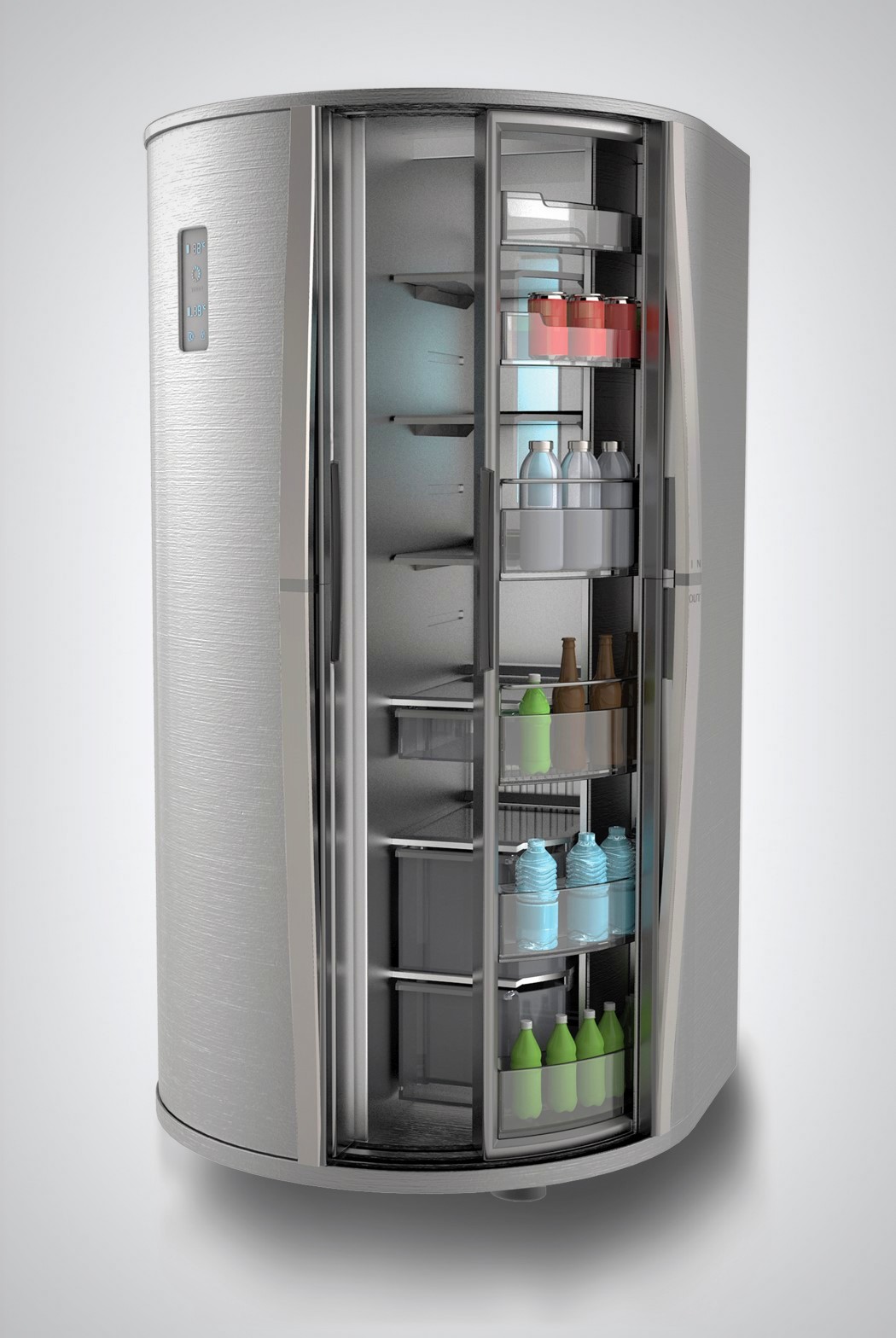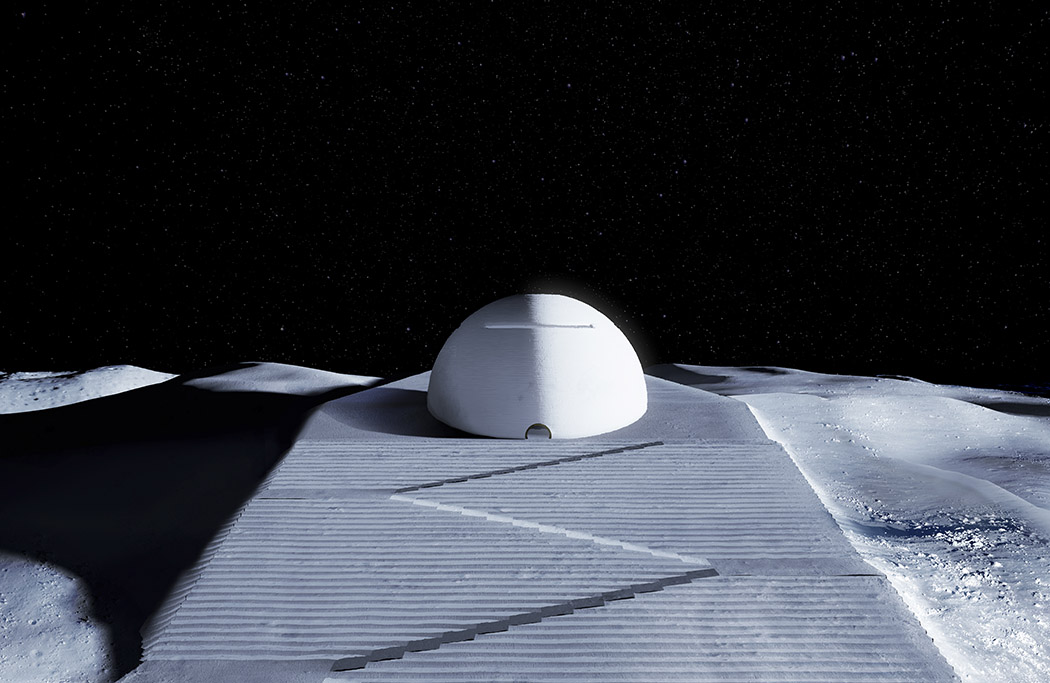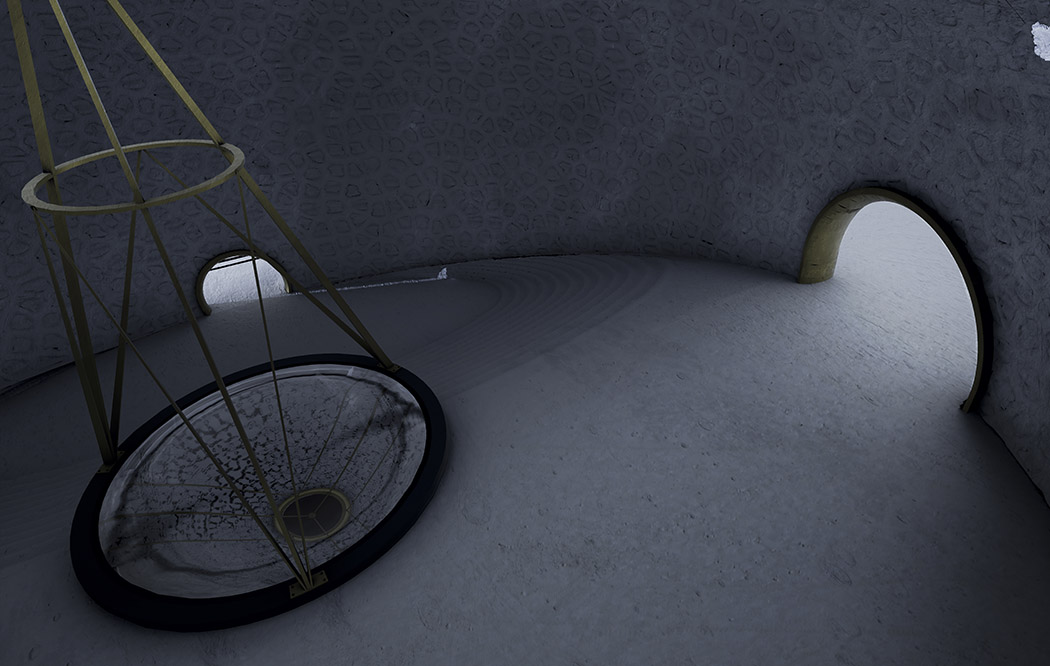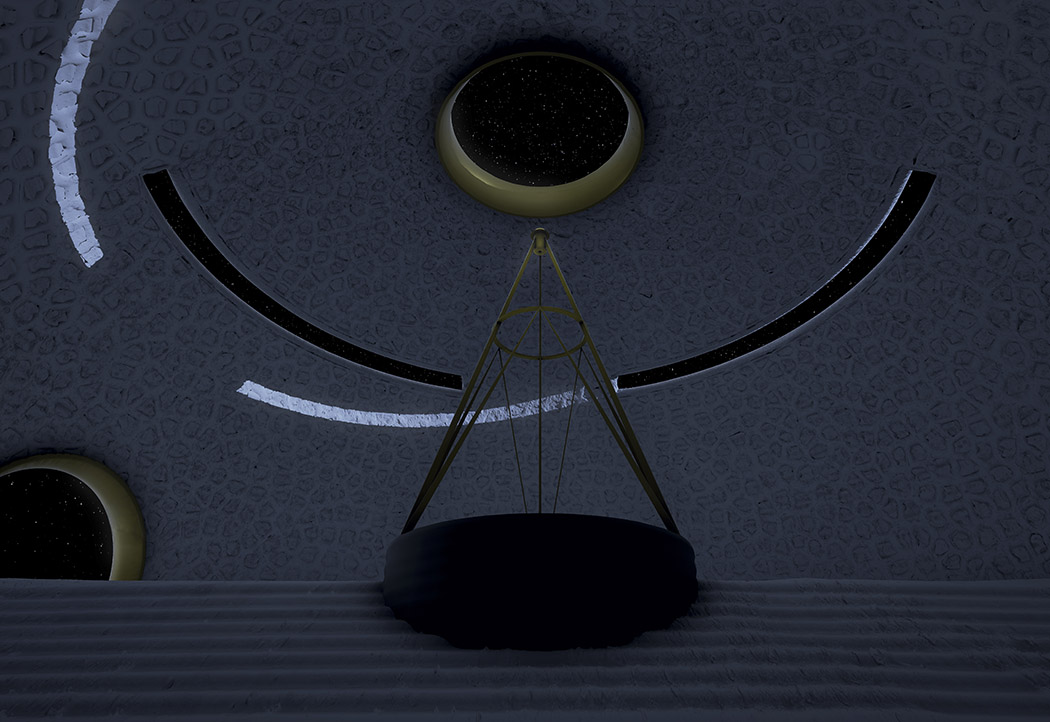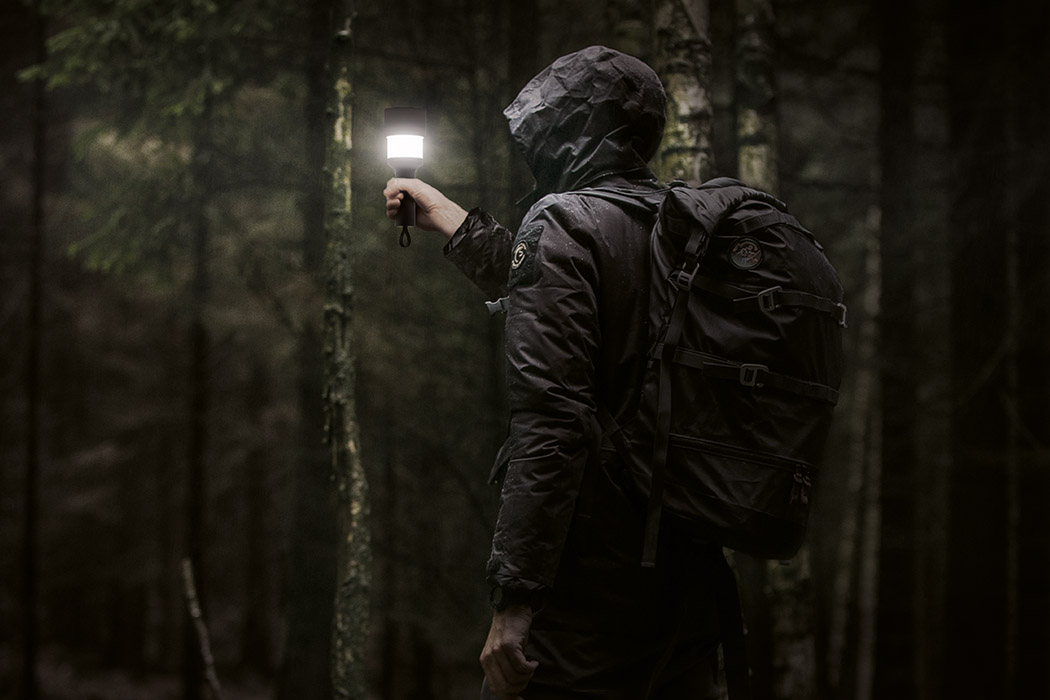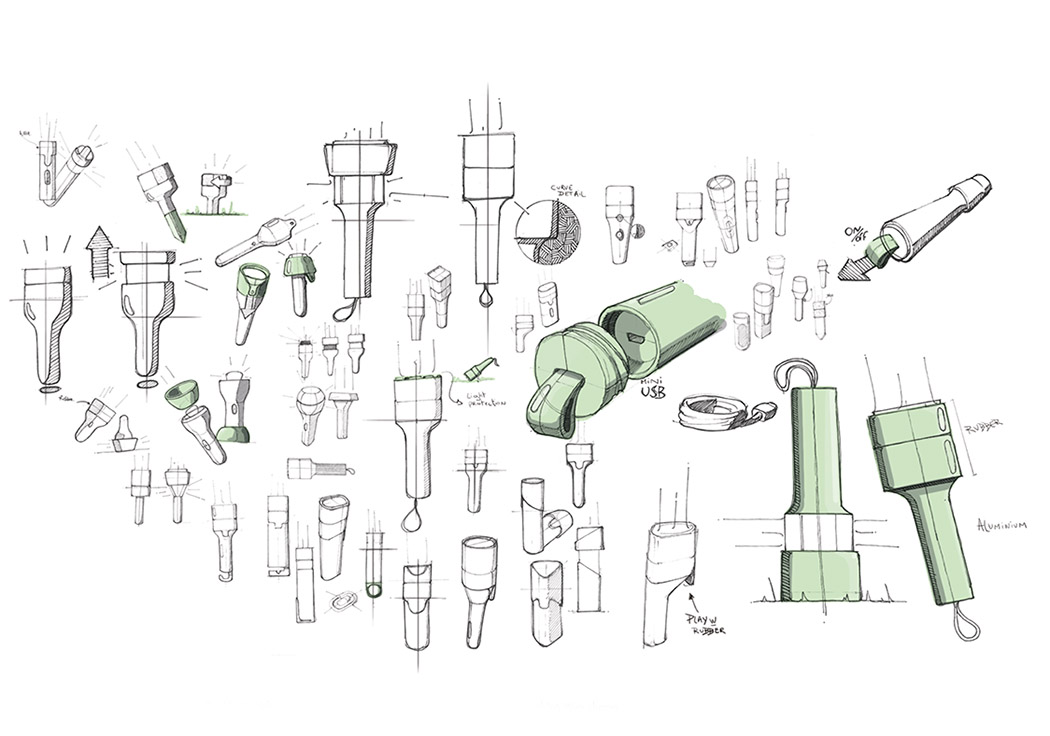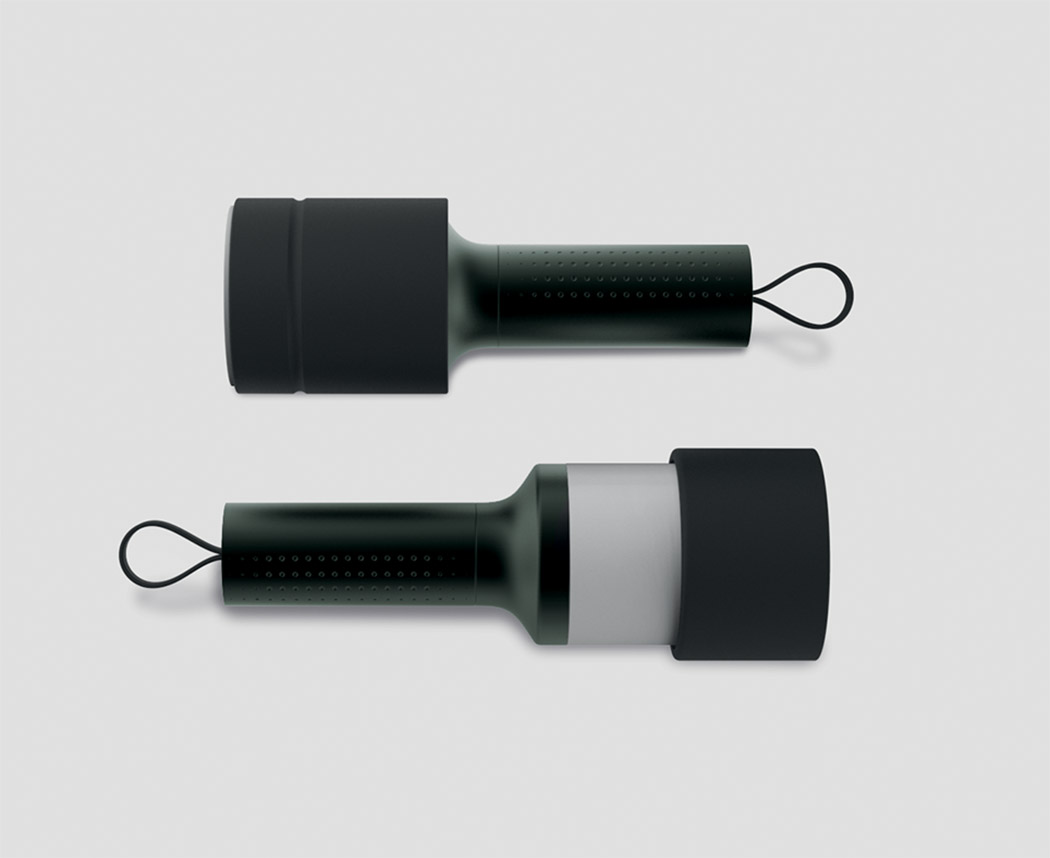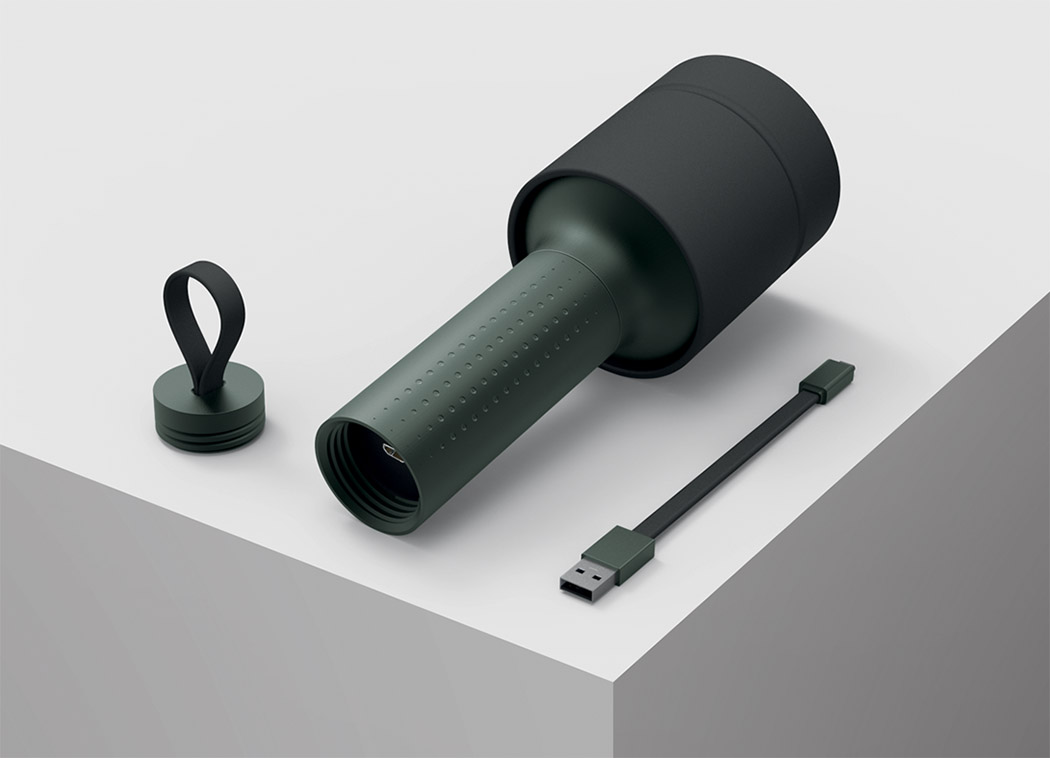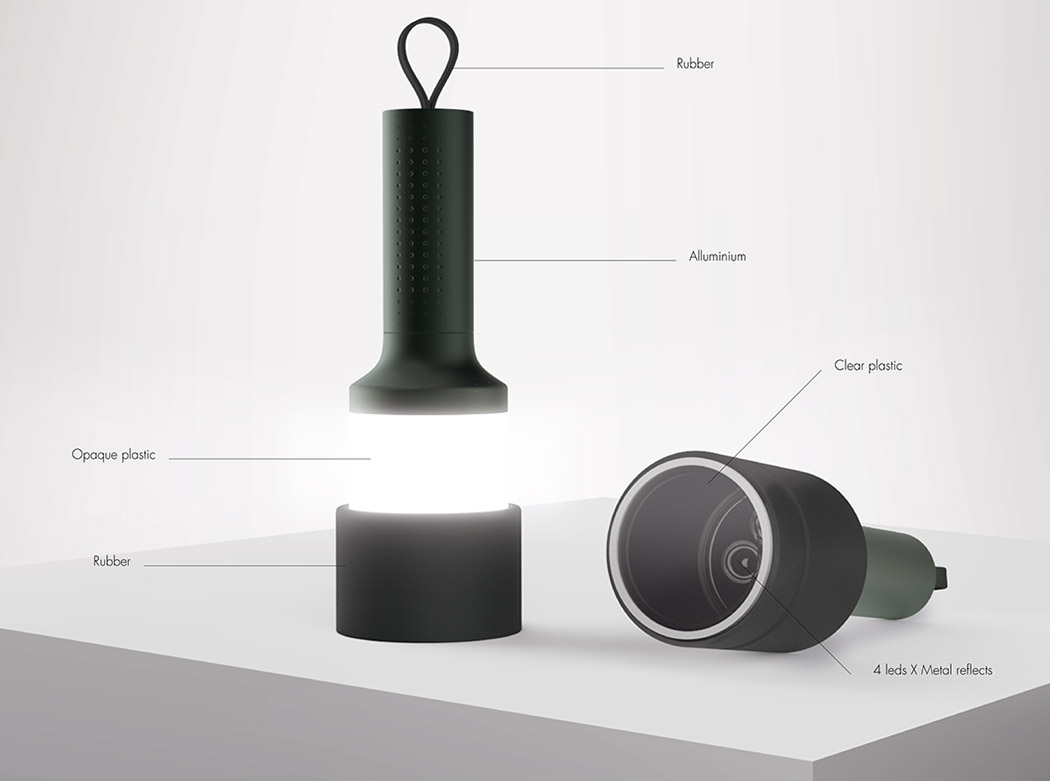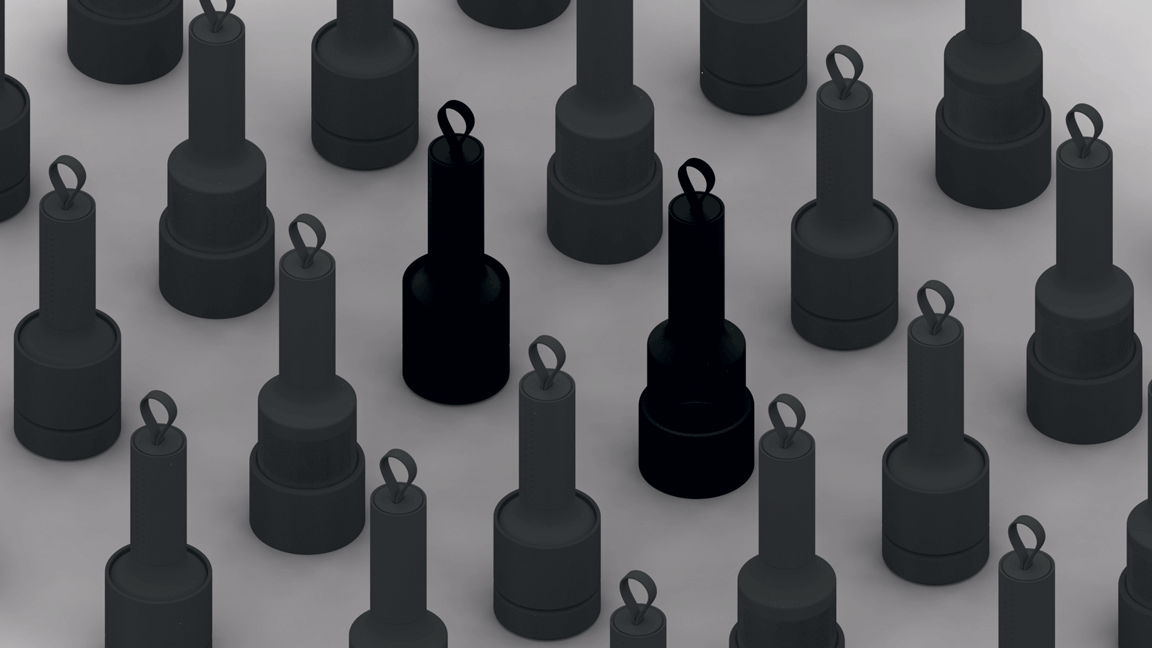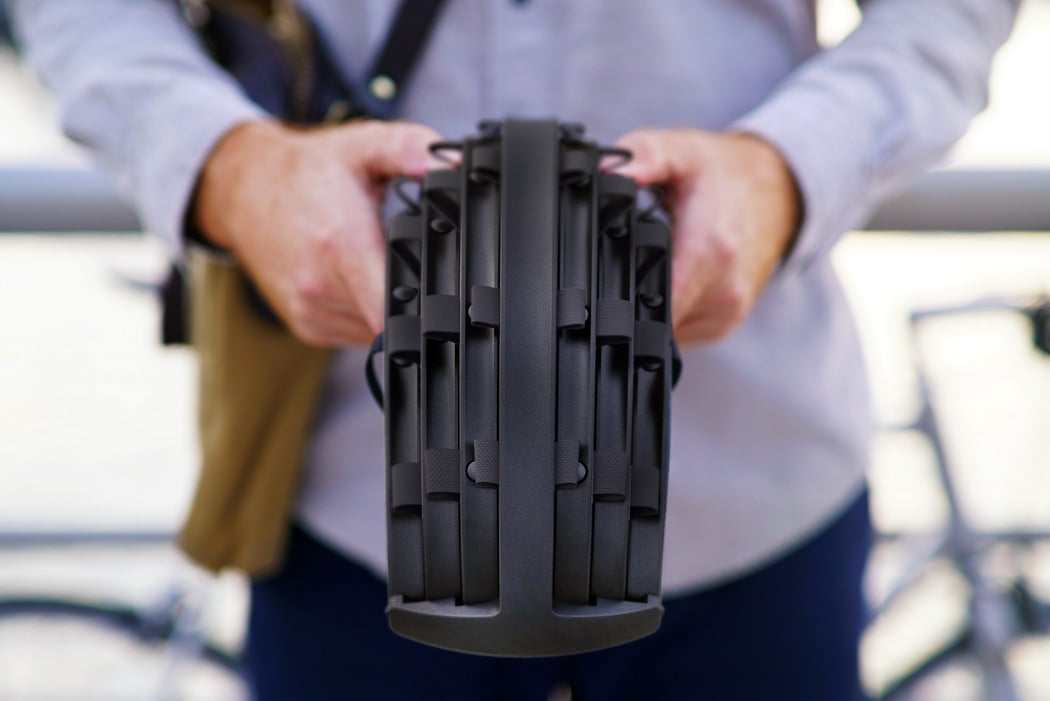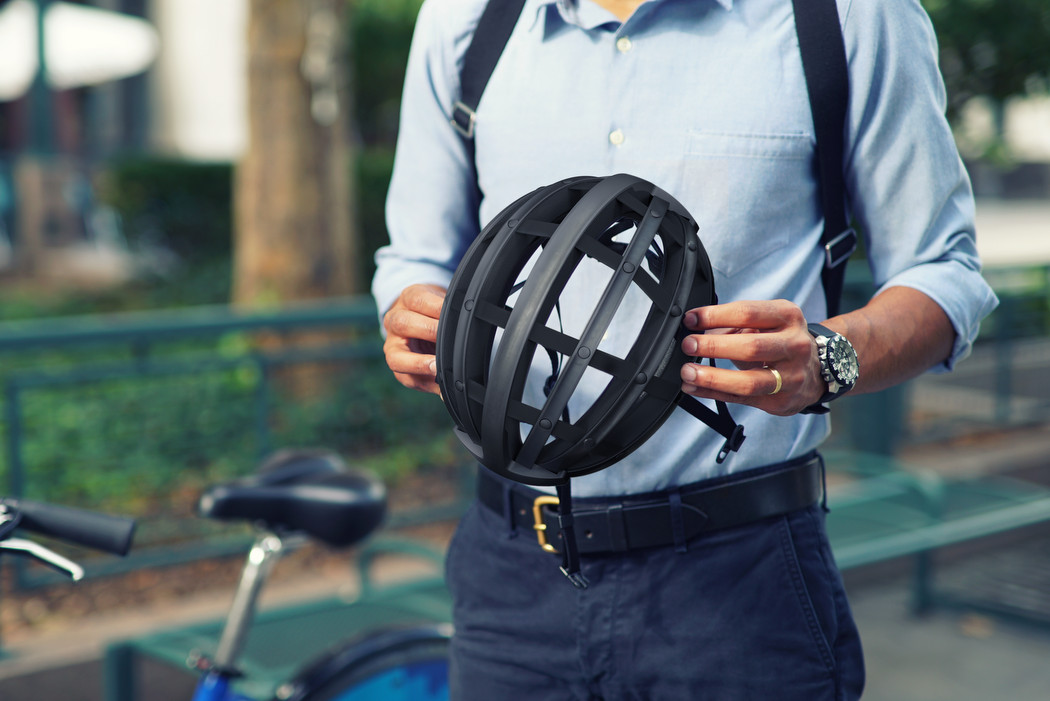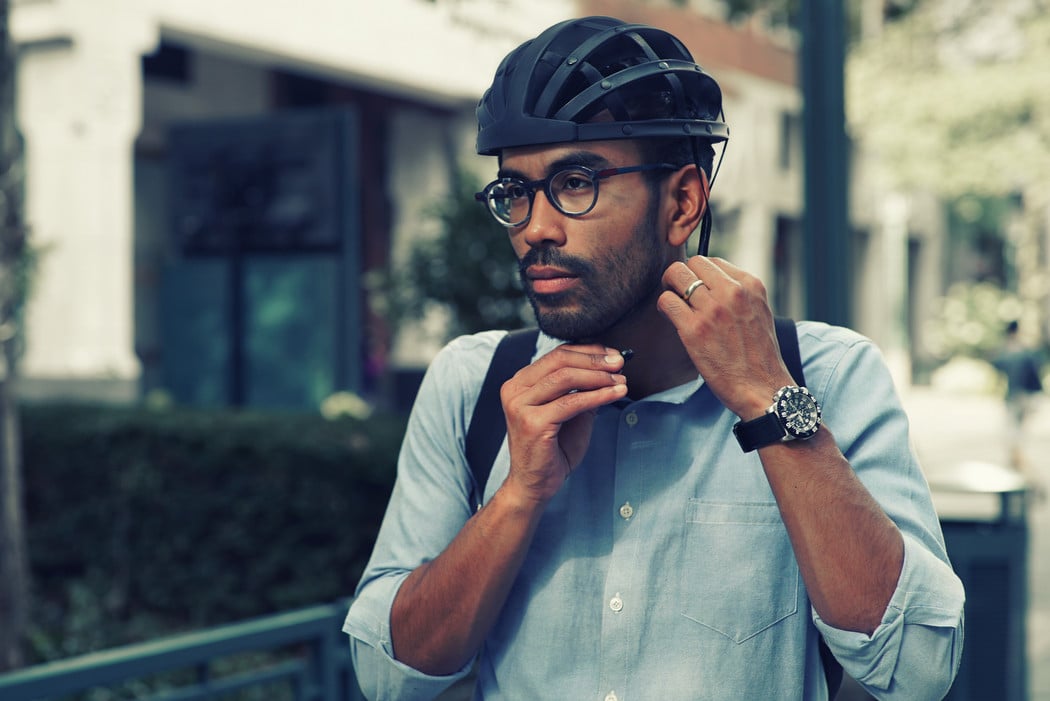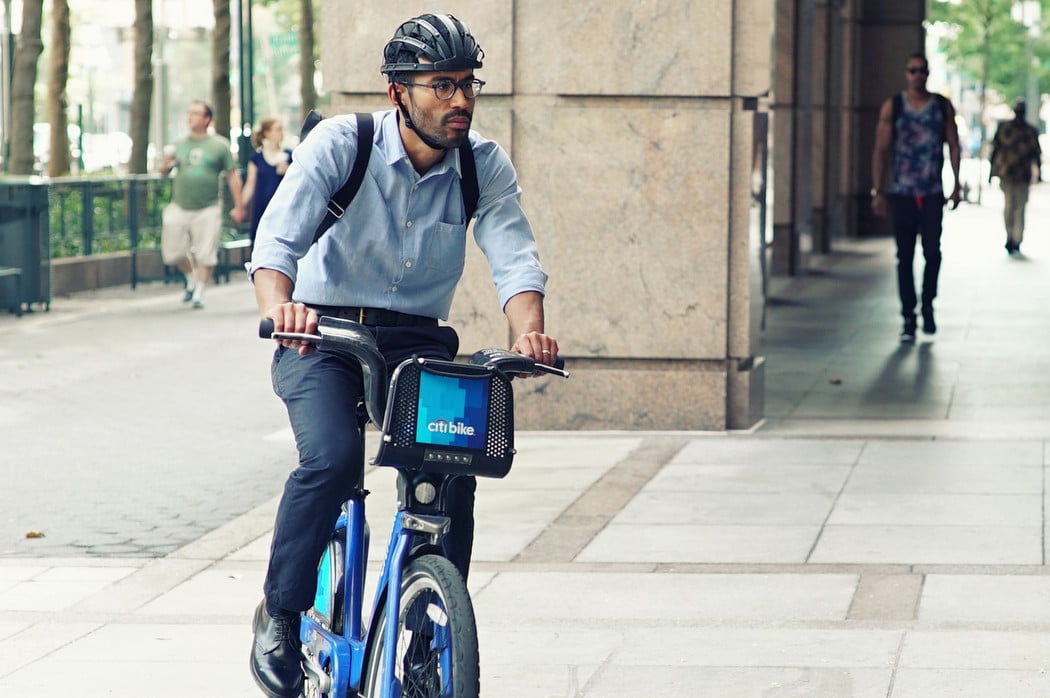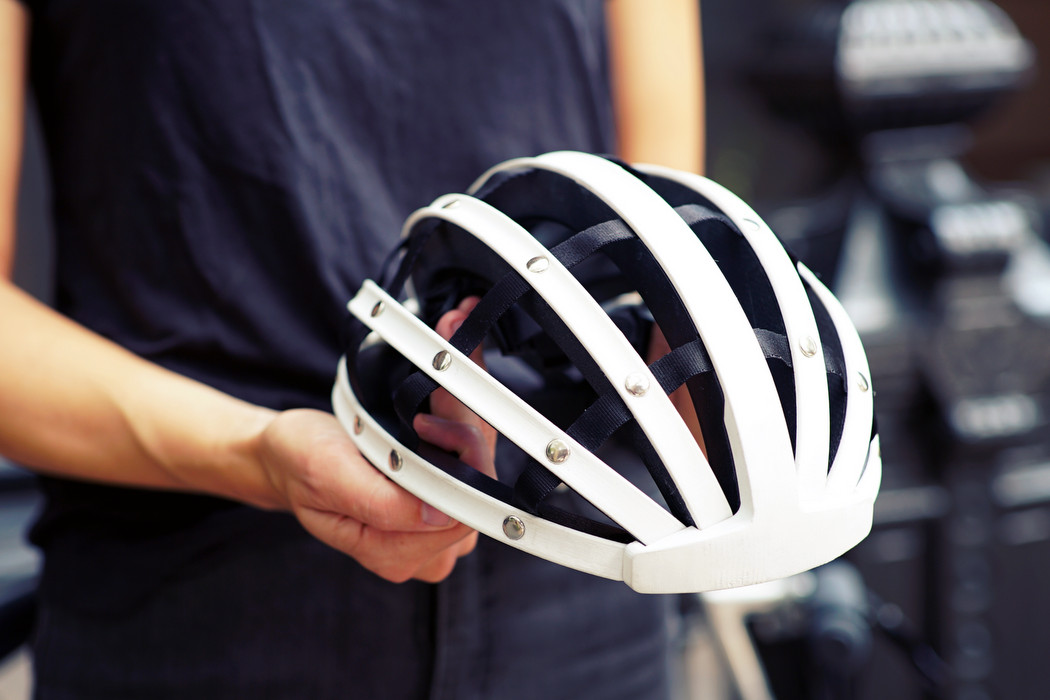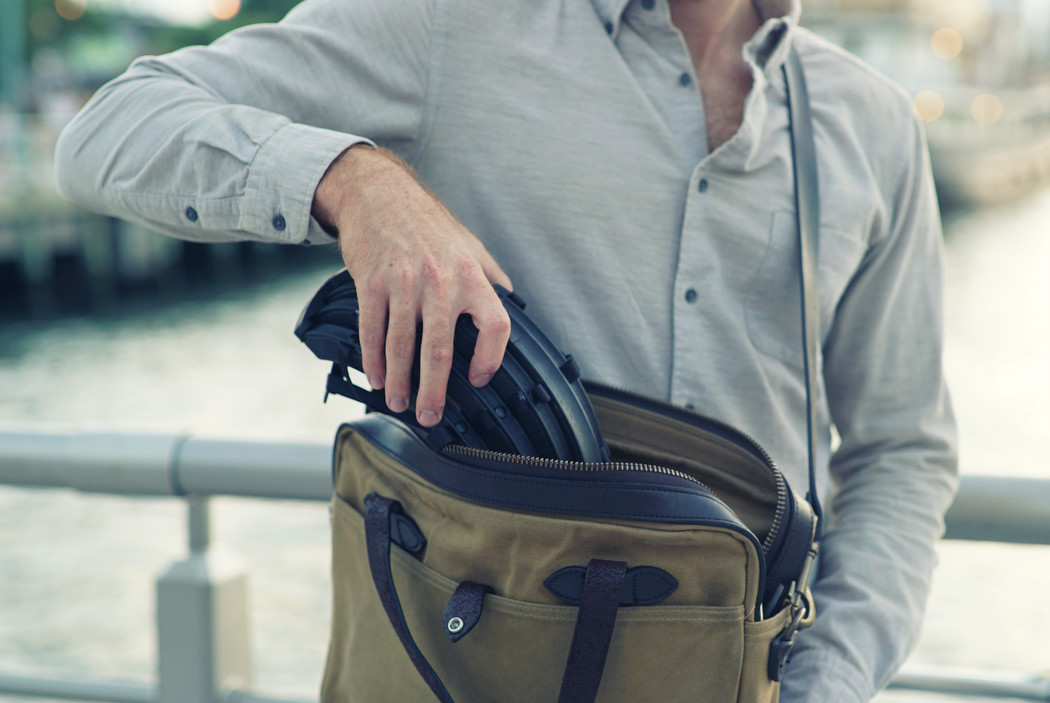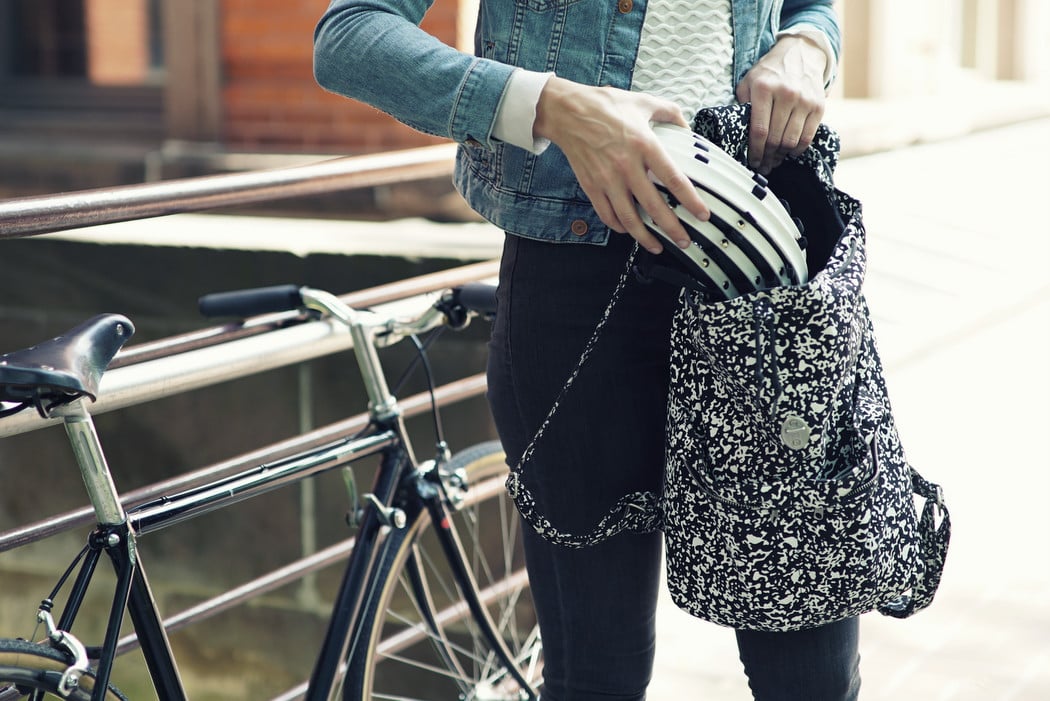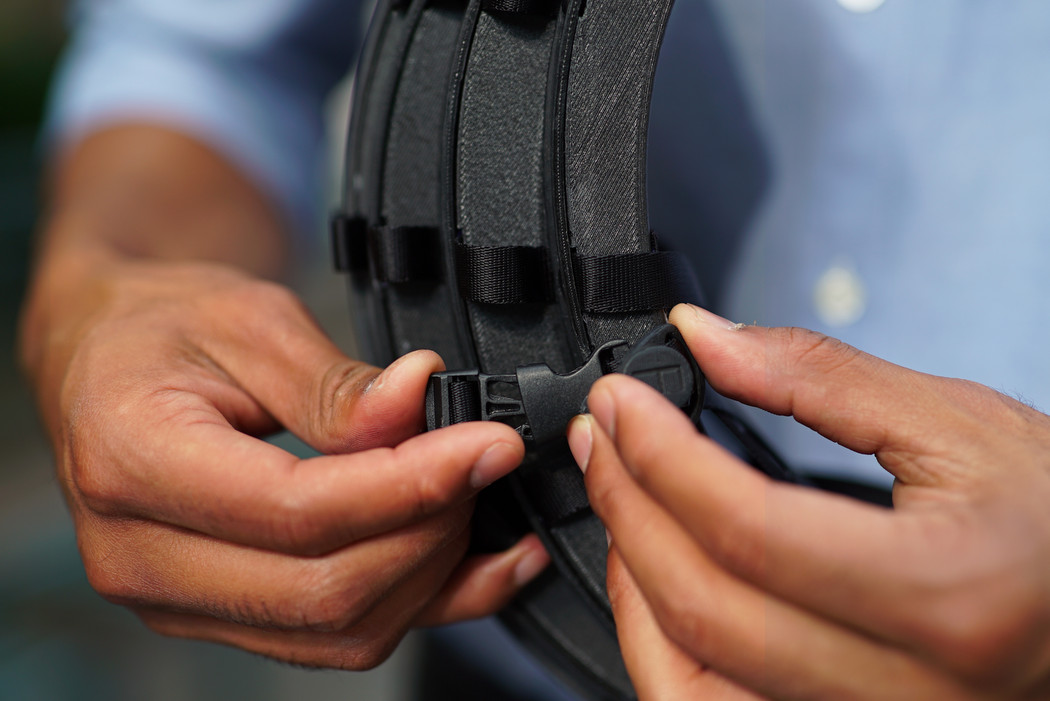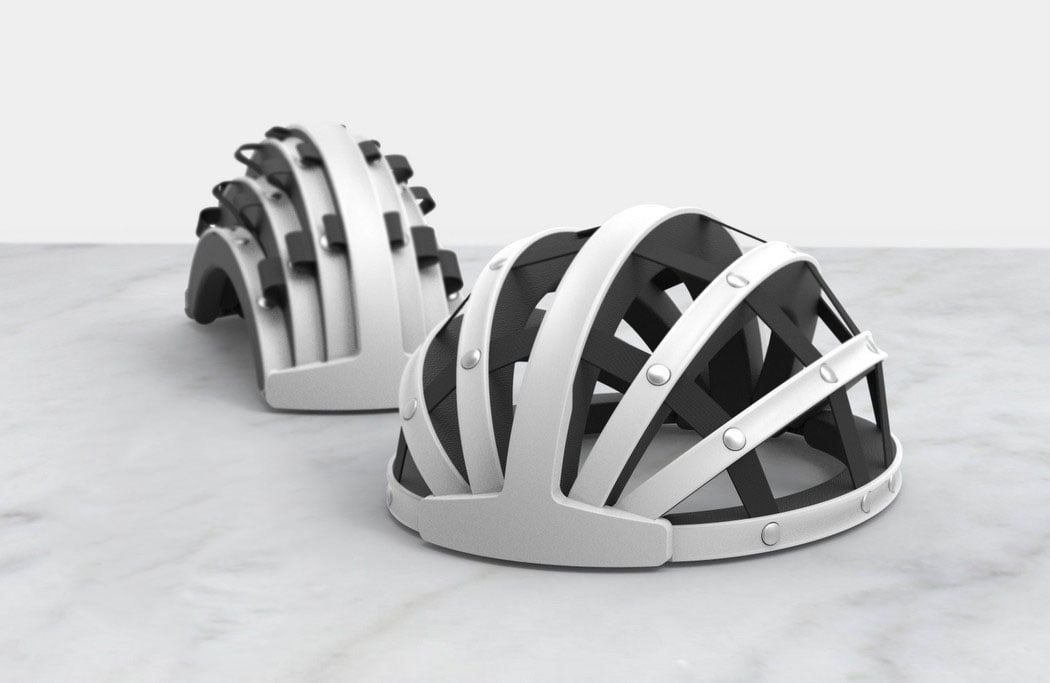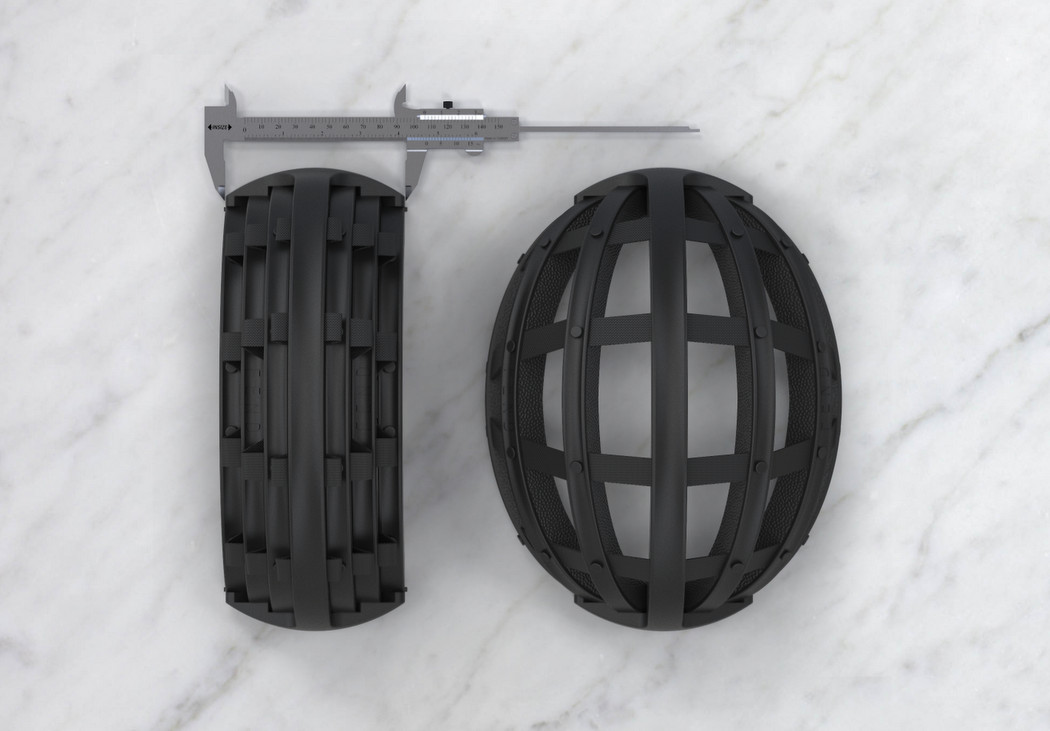Yanko Design - Form Beyond Function |  |
- Everyone should be able to access a fridge!
- The Moon is for All Men
- Tunes to Fine-tune your Brain
- The Accordion Playhouse
- Torch Lighting for Travelers
- YD takes on The Good Design Awards 2016 in Japan!
- Space saving Skull-saver
| Everyone should be able to access a fridge! Posted: 29 Dec 2016 12:05 PM PST
Technology changes things every year. Sometimes, design doesn’t change anything for years at an end… and I wonder why. For instance, look at the refrigerator. For years, the refrigerator doors operate on a hinge, making it difficult for people on wheelchairs to open. Even the disabled argument aside, seeing how cramped our apartments and kitchens are becoming with time, It only makes sense to move to something apart from a hinged door. The Sliding Fridge is one such idea that makes a much needed change to the way we interact with fridge doors. The entire fridge experience is built around these sliding doors. The fridge’s design is made cylindrical to achieve this feat. The fridge even pays attention to the smallest details. Just like regular fridges have storage on the door, the sliding fridge has a sliding compartment behind the door for storing immediate accessibles like bottles, or cartons of milk/juice. Goes to show that design can reinvent even the most simple products to make them even more universal! Designers: Han Jiyoon & Choi Youjin.
|
| Posted: 29 Dec 2016 09:04 AM PST Instead of seeing it as just a potential site for groundbreaking scientific discovery, sci-fi tourism or the lucrative exploitation of extraterrestrial natural resources, designer Jorge Mañes Rubio looks at the Moon as a peaceful symbol that should be celebrated. The Moon, unlike Earth, has no boundaries, no divisions, no nations. So, he decided the best way to symbolize this was to build a temple on the Moon – a temple to celebrate the Moon as a powerful symbol of unity for mankind. The Moon Temple will be located on the rim of the Shackleton, a gigantic impact crater situated right on the south pole of the Moon. With a diameter of 21km and more than 4200m deep, this imposing location is a potential candidate for a future outpost on the Moon due to its unique lighting conditions. While some of its peaks receive almost continuous sunlight, its interior (one of the coldest and darkest places in the Solar System) may have captured water ice, key for a self-sustainable lunar settlement. The Moon Temple could serve social, cultural and spiritual purposes and will be 3D printed using lunar regolith. Such material and technology will most likely create ‘soft’ structures, resembling the way traditional adobe architecture has been used on our planet for many centuries. Designer: Jorge Mañes Rubio
|
| Posted: 29 Dec 2016 07:29 AM PST Why would you need headphones while sleeping… some would ask. White noise, relaxing music, alarms. These are the obvious reasons. What you don’t know is that your brain’s always listening, always learning. People rely on sleep therapy to hack their subconscious, to sleep better, wake up feeling well rested, feeling focused. Sleepphones are built for the latter. They fit snugly around your head, allowing you to listen in, without having to struggle to sleep with earphones or massive headphones. They come in wired and wireless variants, depending on what device you use. Yes, obviously you could opt for a bluetooth speaker instead, but bluetooth speakers don’t offer isolated audio. I’m talking binaural beats, or hypno-therapy, where you have two separate pieces of audio playing in each ear, triggering separate parts of the brain. Sleepphones also ensure you have a private audio experience, so that others don’t have to listen to what you’re listening to. The Sleepphones are probably the closest thing you can get to what we’ve seen in The Matrix. You can program your mind to learn new languages, to be more confident, and even more creative… all in your sleep. Not to mention you can even use this to lucid dream! Isn’t that just incredible?! Designer: Wei-Shin Lai Buy It Here: $27.50 |
| Posted: 29 Dec 2016 03:04 AM PST
As you might’ve guessed from its name, this design earns its title by utilizing a playful folding technique to expand, collapse, and adopt different forms. Little ones can stretch it or bend it to their heart’s desire! Vibrant imagery becomes visible when it’s expanded, emerging tots in an imagination-inspiring environment they can call their own. When it’s not in use, simply fold it up to store out of the way! Designer: Hyun Gon Kim
|
| Posted: 29 Dec 2016 12:40 AM PST
The TORQUA flashlight is as versatile as it is minimal. This simplistic design might keep the number of parts to a minimum, but it can be used in many different ways. With a simple slide of the casing, you can transform it from a directional beam flashlight to a torch-style lantern. Perfect for campers, you can use it to light the path ahead of you and then change it up to hang from a tent and illuminate your surroundings. Easily rechargeable via USB, you can also keep it in the car or at home for convenient, mobile illumination. Designer: Pierre Villez
|
| YD takes on The Good Design Awards 2016 in Japan! Posted: 28 Dec 2016 07:03 PM PST
The Good Design Awards isn’t just any awards program for designers. It’s a pilgrimage that takes you through the mind and soul of Japan, arguably one of the world’s most landmark locations for design. Now while that’s a completely surreal experience, it comes with one pretty large drawback. I’m so mesmerized by what I saw and learnt, I’m scared I won’t be able to do justice to it with my words! So as you read this account, know that I try my best to portray the Good Design Awards in the most appropriately grand light… and that if one ever gets the opportunity; Japan in general, and the Good Design Awards in particular, is the epicenter of one of the most pure and highly evolved design scenes on this planet. Becoming almost a hive for the best minds in design across Japan and the world, the Good Design Awards are organized by the Japan Institute of Design Promotion (JDP) every year around October. Most designers spend their lives toiling away for a chance to lay a hand on the Good Design Award and gain the coveted ‘G’ Mark that would then decorate their product for the years to come. What sets the Good Design Awards (GDA) apart, and on a pedestal is its strong link to society and how design can have a positive and lasting impact on the community, not just in Japan, but abroad too. After all, said the Chairman of the GDA Kazufumi Nagai, no matter how different communities are, we all are slowly but steadily moving towards securing the same future for everybody everywhere. With that outlook, the GDA kicked off this year, having three aspects to its awards program and exhibition. The most well known Good Design Awards would be held at the Grand Hyatt ballroom, while the exhibition and showcase would go on at the Tokyo Midtown Atrium. These awards would commemorate new designs every year for not just their innovativeness, but also their ability to bring about change. The next aspect to the GDA was the Long Life Awards. These were reserved for products and designs that stood the test of time, having dominated the market and our lives for more than a decade. In a world where there’s a new laptop or phone being launched almost every month, it takes a special something to stick around for 10 years or more, and the Long Life Awards celebrates just that. The third and most interesting component of the GDA was what the Japanese call the Sonaeru Design Exhibition. Sonaeru in Japanese means to prepare, and the projects in the exhibition aim at one of Japan’s most prime focuses in design today. Disaster Management and Aversion. Everything showcased at the Sonaeru Exhibition was done so to reward the efforts designers put in to prepare the community for any natural disaster. The Good Design Awards and Exhibition The Good Design Awards event was nothing short of glamorous. Dressed in their best (with even a red carpet!), people gathered at the Grand Hyatt to witness the awards ceremony, and to see which of the 6 shortlisted finalists would win the highly reputed Grand Award. An exhibition of all the top entries was simultaneously held at the Tokyo Midtown for design enthusiasts and the Japanese public to see.  Designers gather at the Grand Hyatt to get a taste of the GDA hype!  Vice Chairman of the GDA, Fumie Shibata takes the stage to speak about the year gone by.  Awardees gather for a group photograph with their certificates.  Jury Members and Awardees vote for Grand Award entry  A close call between finalists Authagraph World Map and Yanmar YT3 Tractor  Finalists Yanmar (Left) and Authagraph (Right) await the results  The Authagraph World Map is crowned winner of the Grand Award of the GDA 2016 Edition!  Authagraph re-imagines the globe as we see it, creating a dimensionally accurate representation of the Earth. Click on the image to know more!  Chairman Kazufumi Nagai and Vice Chairman Fumie Shibata get together for a quick photograph  Jury Member and Designer of the Tokyo Midtown Exhibition, Jo Nagasaka poses in front of his work  Making good use of binder clips and minimally cut plywood, Jo Nagasaka visualized the entire exhibition.
 The Tokyo Midtown Exhibition held the top 100 designs from all categories.  Anyone remember the Samsung Serif TV??
 A refreshingly new speaker, the Lyric Speaker flashes the lyrics of the song you’re listening to, giving you an audio-visual treat. Standing beside the speaker is the lead designer.  Designers of the Roppongi Halloween Trash Bag pose with their beautiful product! The trash bag converts streets of garbage into beautiful Jack O’Lanterns on Halloween!  The Yanmar YT3 Tractor, a finalist, makes farming luxurious and aspirational. Long Life Exhibition Located in uptown Marunouchi, the GDA Long Life Exhibition features a collection of the most memorable and indispensable products and services from decades back. These designs have achieved the iconic status and have constantly stood for beauty and quality. Among the awardees were Johnson & Johnson’s Band Aid, and Pocari Sweat. Products that changed the market more than 20 years ago, and are still the standard for comparison in their domain.
Sonaeru Design Exhibition Honestly, I got chills when I heard the way the Japanese spoke about natural disasters constantly being a threat to their existence. There is concern within them, but without fear. Just a determination to strive, to overcome. They honestly see design as a tool to protect, rehabilitate, and hold society together. That’s probably what makes the Japanese such masters at design.  The biggest exhibit at the Sonaeru Exhibition, was the Paper Partitioning System. Designed to be easy-to-assemble, quick and lightweight, these structures provide private spaces for refugees.
 A refugee camp before the Paper Partition System  After the Paper Partition System, the entire camp looks wonderfully live-able, giving refugees a proper space to stay.  The Sonaeru Exhibition in Shibuya Hikarie held a wonderful collection of products and graphic media aimed at educating, protecting, and rehabilitating people in the event of a natural disaster.
 The Life Armour looks like something from a Sci Fi film! It houses one human and can protect him/her from virtually any disaster. The Good Design Awards are held towards the end of the year, every year. Reminding people that the mark of a Good Design is its ability to inspire change in a society, this awards ceremony always ends the year on a wonderful, warm note. The GDA may be ticked off my designer’s bucket list, but it only makes me wonder “What next?”. I can’t wait to see what 2017 holds in store for design! All images courtesy of Yanko Design and JDP
|
| Posted: 28 Dec 2016 12:39 PM PST We’ve all seen the collapsible paper helmet. It’s sturdy, and folds into an unsuspecting flat piece of board that can be carried and unfolded and worn again. However, not many people feel comfortable putting their trust in paper to protect something as precious as their skull. The Fend takes what’s best about the paper helmet, its fold-ability, and breathable design, and puts it into a conventional helmet, creating something that is volumes better in shock absorption, but still manages to be foldable. The design doesn’t deviate from regular helmets in material choice. Made out of ABS and with an EPS Foam lining, the Fend feels like any other helmet. It’s only when you’re packing it away that you marvel the wonderful folding interaction. The entire design collapses into a mass not more than 110mm wide. That’s enough to not just fit into a laptop bag, but even a regular purse! Gives a different meaning to ‘carrying protection with you’, doesn’t it?! Designer: FEND
|
| You are subscribed to email updates from Yanko Design. To stop receiving these emails, you may unsubscribe now. | Email delivery powered by Google |
| Google Inc., 1600 Amphitheatre Parkway, Mountain View, CA 94043, United States | |


